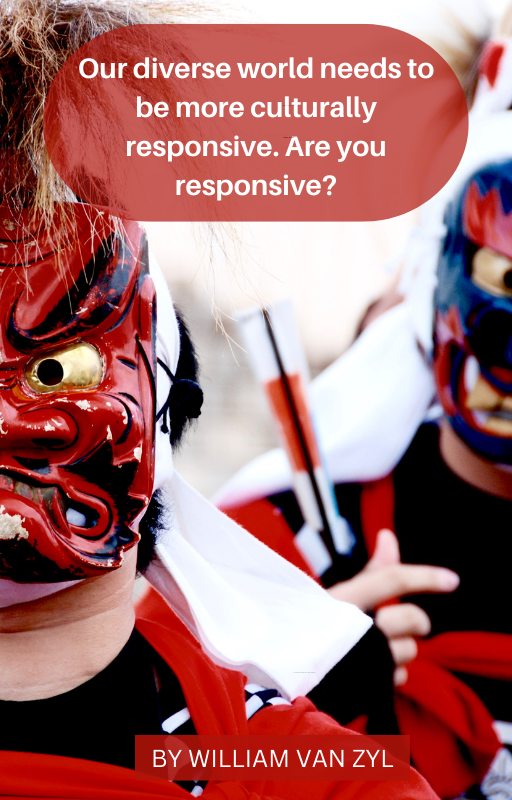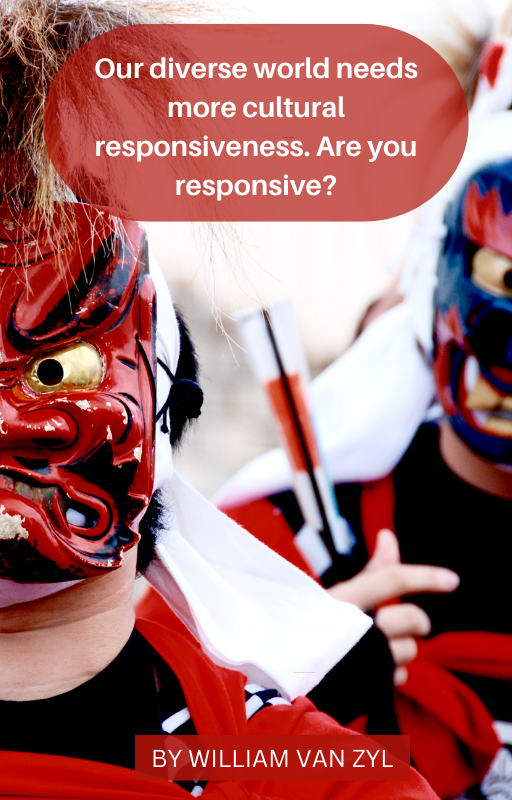
By William Van Zyl
Published in November 14, 2022.

Culturally diverse countries like Germany, Canada, New Zealand, Australia, France, Spain, Italy, the United States, and the United Kingdom face huge challenges as their communities become more diverse. These countries and their teaching cultures are continuously challenged on how they deliver their embedded Cultural Responsive Teaching (CRT).
Around the table, when enjoying a meal and discussing world events, we should encourage cultural responsiveness. Parents could benefit by understanding culturally responsive practice and modelling this in the home. It fosters global citizenship, inclusivity, understanding of other cultures and practices, and respecting other cultures and religions.
But, what does it mean to be culturally responsive?
Being culturally responsive requires having the ability to understand cultural differences, recognize potential biases, and look beyond differences to work productively with children, families, and communities whose cultural contexts are different from one’s own.
Hammond (2015), in her great article, 3 Tips to Make Any Lesson More Culturally Responsive, lists 3 things that will immediately affect cultural responsiveness. Though referring to a classroom scenario, the tips can be applied to the way we live our everyday lives. I include everyday life comments, and then I comment in an educational context (CRT) – the classroom. I have 4 things that will instantly add depth to your culturally responsive practice. Here they are:
- Play More Games: Playing games is a great way to get people to engage in fun activities. It helps them bond and develop a sense of respect and pride for their own culture and others. Games provide the basis for sharing and acknowledging differences. In the classroom: Attention and active processing are important aspects of getting students engaged. Create quizzes that are inclusive of other cultures and religions. Play Kahoots that celebrate the differences in our world. For example, in an NZ context, teachers include Māori card and board games (e.g., Tākaro, Māori-minute, Epic tribal tower defense game, fun Te Reo games, puzzles, and more) have been included. Play Minecraft with younger kids and teenagers. Acknowledge the cultural differences in the Minecraft world. For example, designing buildings (architecture) allows for exploring different shapes, forms, and patterns for specific countries and cultures. See the Māori Tools developed in 2019 for Minecraft. For example, Minecrafters can create a typical Māori Marae (Cultural house for gathering) in a New Zealand context.
- Work in small teams. Be collaborative, and make it social: Organise the interaction in the room, so people are reliant on one another and are challenged to express diversity in their collaboration. Facilitate sharing. In a classroom: From a teacher’s perspective, delivering lessons using the principles of collaboration in pairs or small groups will immediately affect culturally responsive practice. The context provided is crucial. For example, sharing, comparing and contrasting cultural differences on fundamental levels. The aspects that I am referring to here are The Creation or Evolution of the Universe. Different cultures and religions have different views, values and beliefs. A great opportunity to foster respect. Understanding, acknowledging, tolerating, and respecting cultural differences is key to culturally responsive teaching (CRT).
- Tell many different stories: We are wired for stories. Telling stories, including the diverse and wide spectrum of stories from different countries and cultures, provide a rich backdrop for one’s own stories. Comparing and contrasting stories also develop creativity. For example, developing creative writing (fiction and non-fiction). In a classroom: Teachers should expand their knowledge of other cultures’ famous stories, literary works, and writers. They should develop their knowledge of global stories. The different stories, folklore, myths, fables, legends, and more provide a rich tapestry for embedding CRT in conversations and the classroom. For example, see the lesson example by the author comparing and contrasting 3 different countries (Māori – New Zealand, South Africa, and Canada): HEROES, HEROINES AND ME: Tuahangata (Heroes) & Tuawahine (Heroines). MAORI CULTURE COMPARED TO PAKEHA AND OTHER GLOBAL HEROES (LESSON & RESOURCE FOR 13-YEAR-OLD TO 15-YEAR-OLD STUDENTS).
- Compare and contrast different stories, cultures, beliefs, and values. Analise differences. Identify similarities. Comment on the similarities, and differences between different cultures. Celebrate the unique and outstanding things in the different cultures in our world. In the classroom: List the differences and the similarities. Celebrate the differences. Include different aspects in lesson plans and design briefs. Develop your knowledge of the different cultures of the world. Focus on the most important ones in your own country and environment. Instill honour and respect for other cultures and beliefs. You don’t have to compromise your own culture and beliefs – it is your identity.
References:
Hammond, Z. (2015). 3 Tips to Make Any Lesson More Culturally Responsive. https://www.cultofpedagogy.com/culturally-responsive-teaching-strategies/
All rights reserved.
Our diverse world needs to be more culturally responsive. Are you responsive?
This eBook/article or any portion
thereof may not be reproduced or used in any manner
without the publisher’s express written permission, except for the use of brief quotations in a book review.
Published by Five House Publishing (New Zealand)
First Publishing, November 2022
More eBooks and articles are available at https://fivehousepublishing.com/
More about the author at http://williamvanzyl.com/